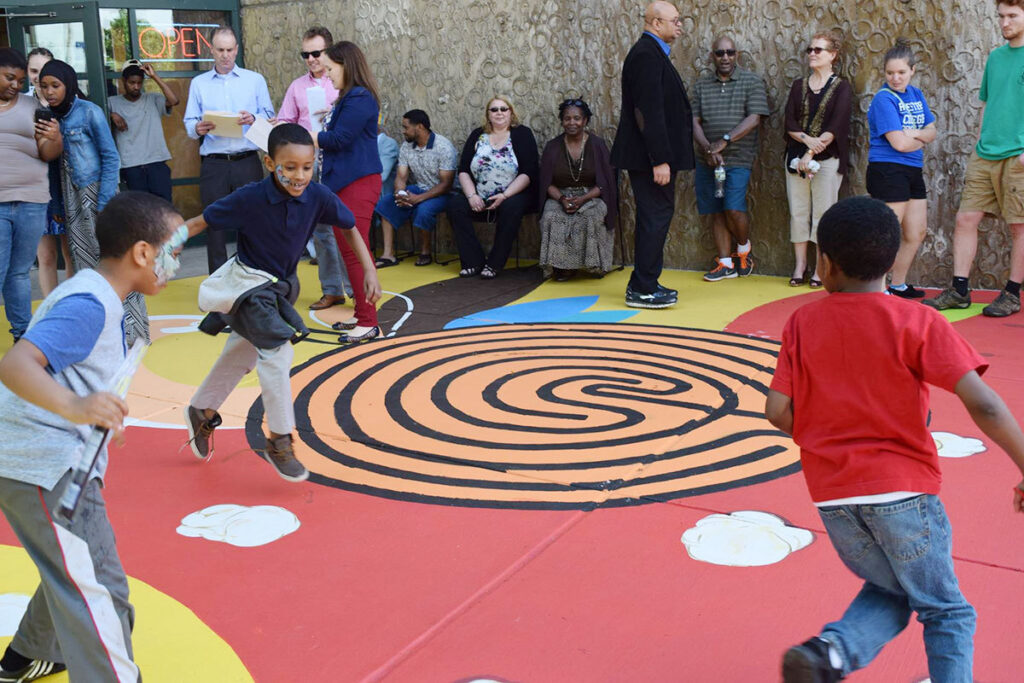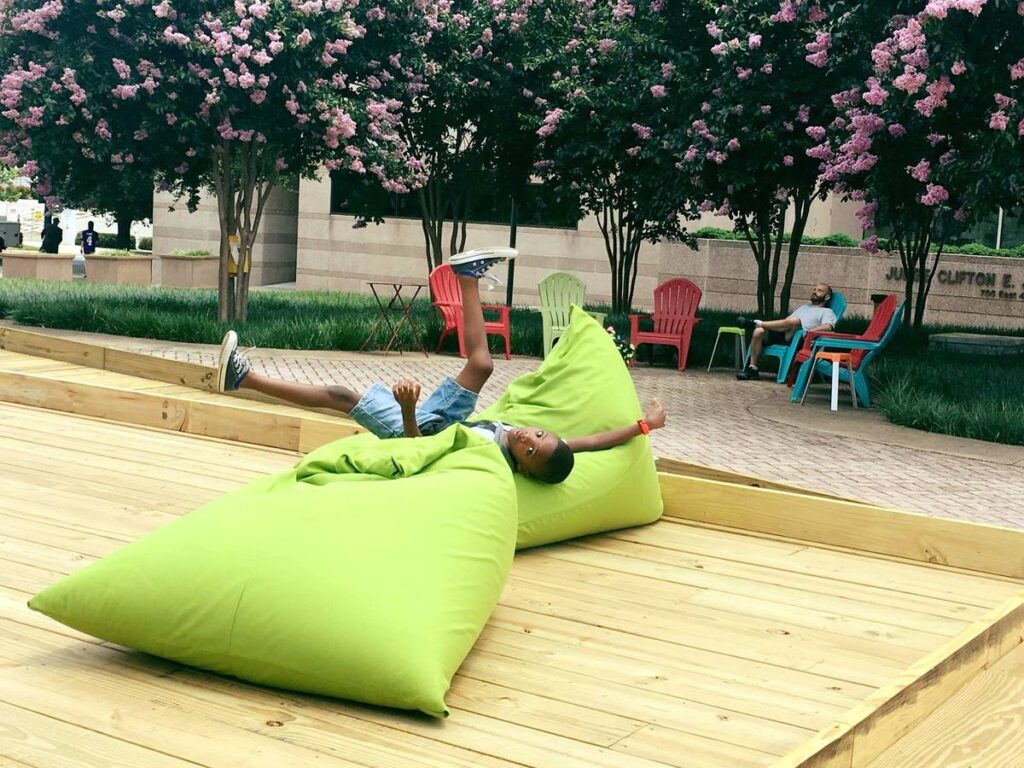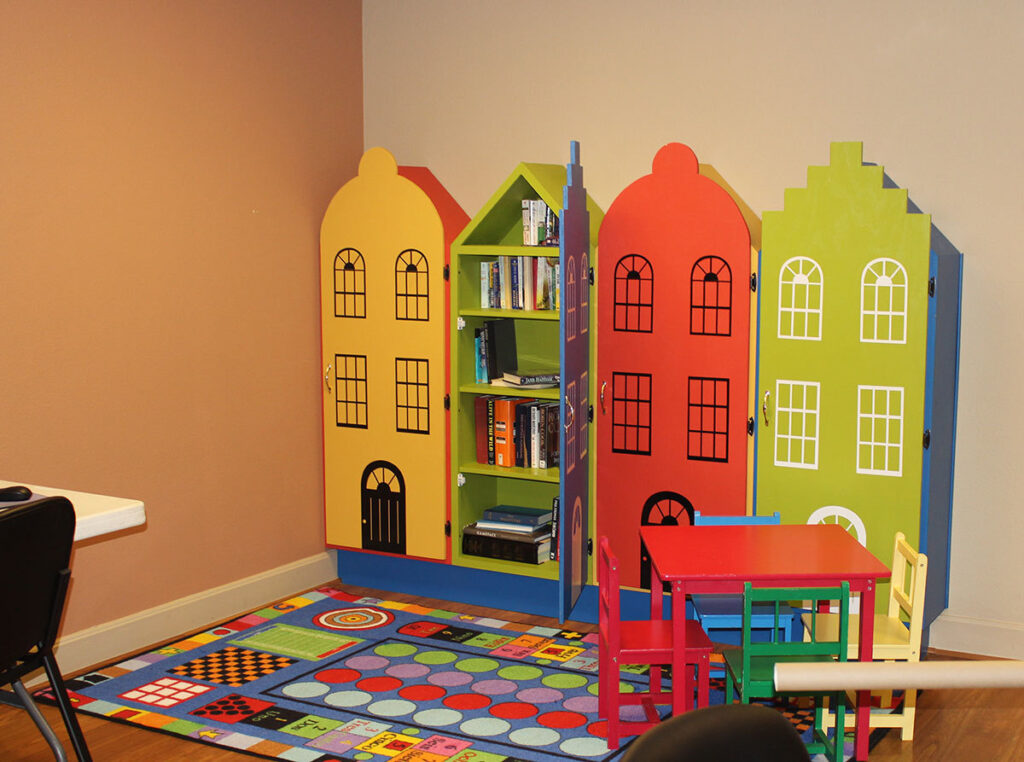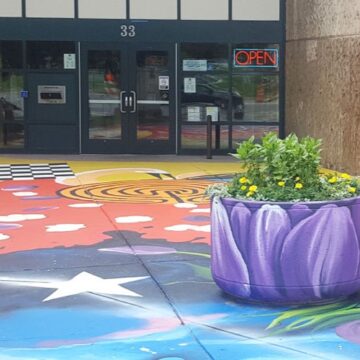Cities across the country are struggling with fostering connections between citizens and city halls and public service providers. Incorporating Play Everywhere in civic, public spaces can help bridge these divides. These spaces are an easy and available opportunity for kids and families to feel some ownership and sense of belonging in civic institutions. In civic spaces, geographically and socioeconomically diverse families converge to gather, access services and facilities and get things done. Civic spaces are—or can be—the physical expressions of public values. Providing visible spaces for kids, families and play in civic spaces communicates that they are welcome, that they are valued and that they are an important part of the civic landscape.

Design Principles
Libraries and community/recreation centers
These are the “low-hanging fruit” of playful civic spaces. Many libraries and public community/recreation centers already attract large numbers of kids and families each day to their facilities and the activities they sponsor. However, providing unique experiences that will attract greater numbers of kids can be challenging. While many libraries and community/recreation centers already do a great job of inspiring play and fostering kid-friendly environments, many fail to achieve their potential as playful, and play-full, community institutions.
Ideas for expanding play opportunities at libraries and community centers include:
- Ensuring that associated outdoor spaces and indoor facilities achieve their maximum playful potential by complementing existing programs and facilities.
- Building on existing kids’ programming to foster more opportunities for play.
- Ensuring that those visiting and lingering at libraries and community centers have appropriate gathering places, which could incorporate opportunities for kids to play while adults either play with them or socialize.
- Retrofitting the public faces of libraries and community centers—the places where buildings or outdoor space meet the street and sidewalks—to inspire play and welcome kids and families through play installations, art and playful signs. See also Streets and Sidewalks.

Other outdoor civic spaces
Many civic buildings of all types already have usable outdoor spaces, ranging from formal governmental plazas to smaller courtyards, green spaces and seating areas. As described in other sections of the Playbook, many of these spaces offer great potential for active, meaningful play. Opportunities to take advantage of outdoor civic spaces can include:
- Integrating playful spaces or experiences into the formal public spaces associated with government functions. Many city halls, government centers and courthouses have formal civic plazas or green spaces associated with them. See also Parks, Trails and Public spaces and Moveable and Pop-Up Play.
- Turning existing building courtyards into playspaces.
- Reclaiming or repurposing leftover outdoor spaces that could be put to better, more playful use, such as steps, entrances, seating areas and excess parking.
- Enlivening the streetscapes outside of public buildings or civic spaces. See Streets and Sidewalks.

Other indoor civic spaces
From lobbies and waiting rooms to hallways and common spaces, many civic buildings have underutilized indoor spaces that can be strategically repurposed to inspire play and pass the time while parents and caregivers wait and take care of business. This can be done by:
- Establishing playful spaces within the lobbies and hallways of buildings serving civic functions.
- Transforming the waiting areas of individual offices or departments into welcoming and playful environments, where adults can join in on the fun during their downtime.
- Incorporating play opportunities into underutilized common spaces in buildings, from cafeterias to multipurpose rooms.
General considerations
- Observe and understand the dynamics and patterns of how people use civic spaces to select the best locations for Play Everywhere. For example, where do long lines and waits typically occur? Which civic destinations tend to attract the most families?
- Maximize the reach, visibility and symbolism of a play installation by targeting prominent and visible public spaces and major civic crossroads that attract families and kids from all over the city.
- Partner with individual agencies or departments with multiple offices around the city to implement and replicate Play Everywhere on a larger scale.
